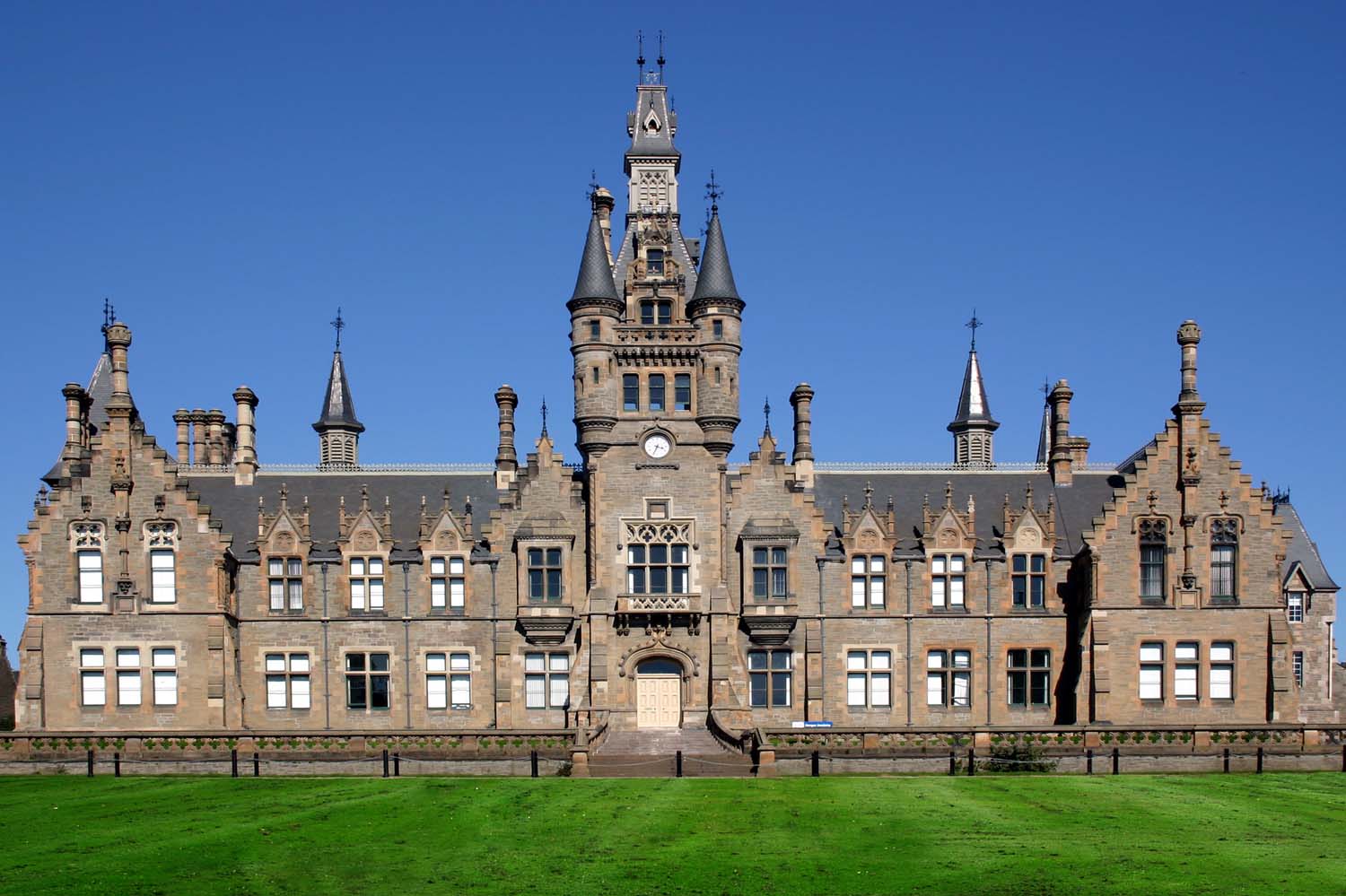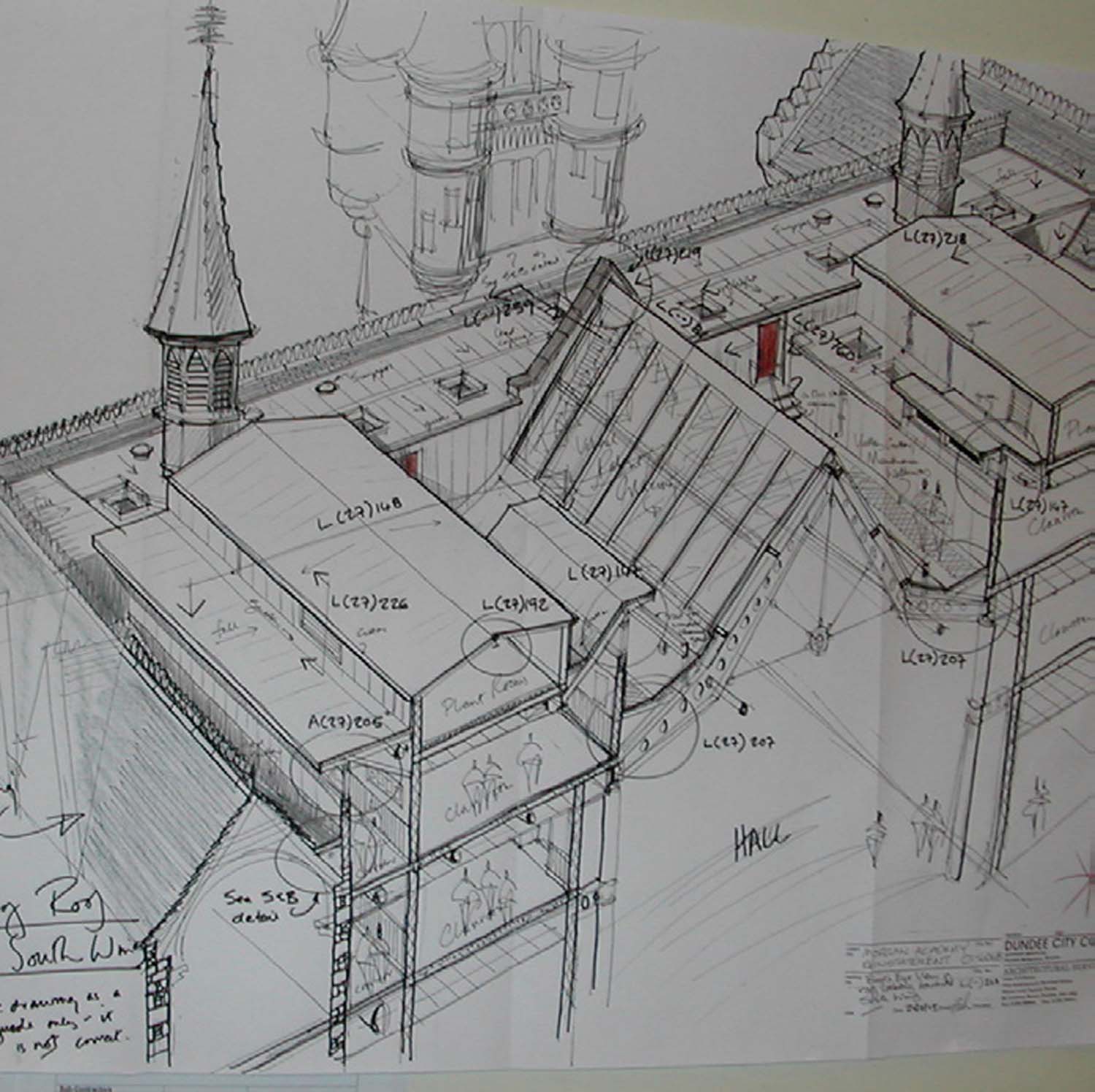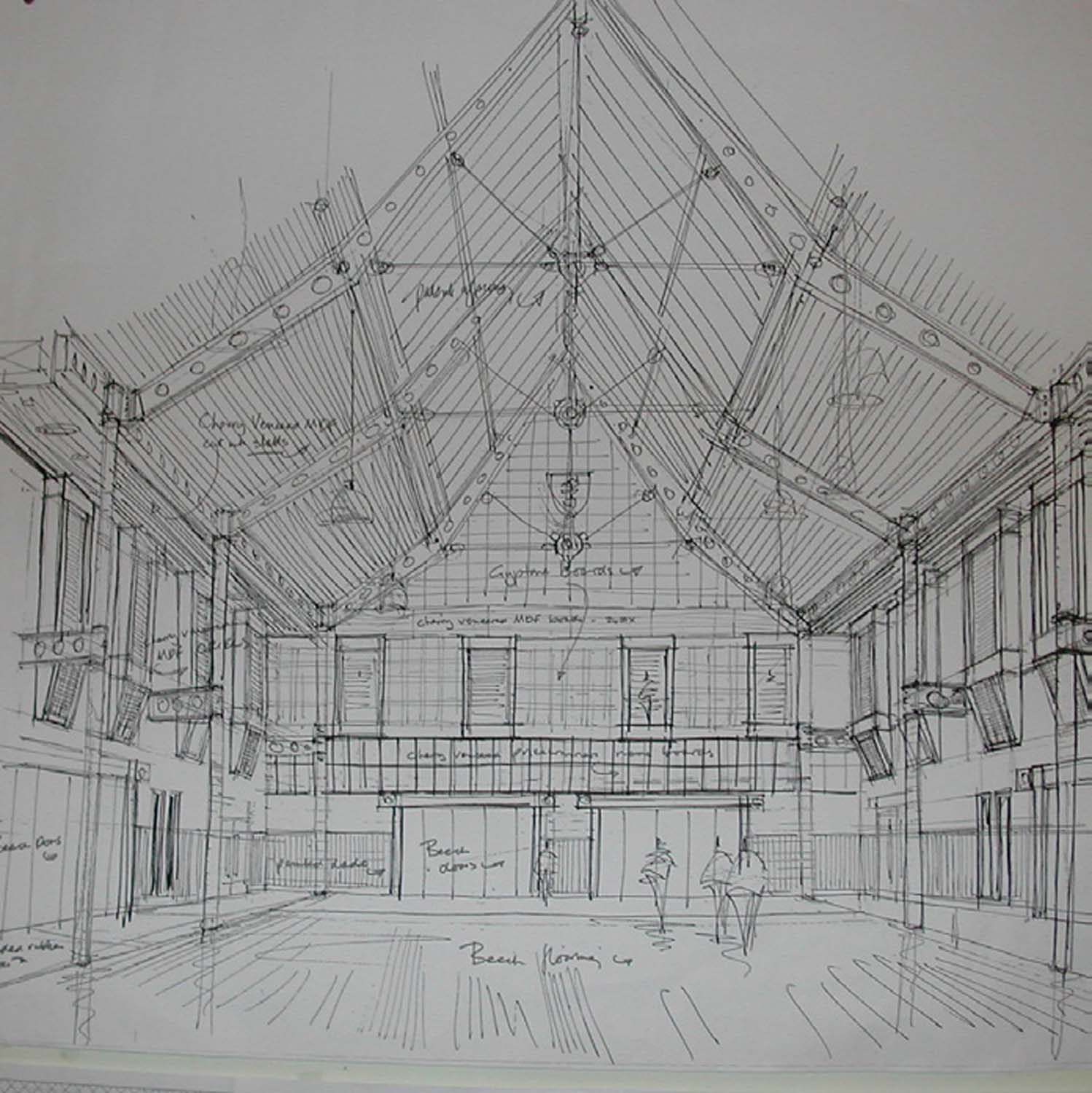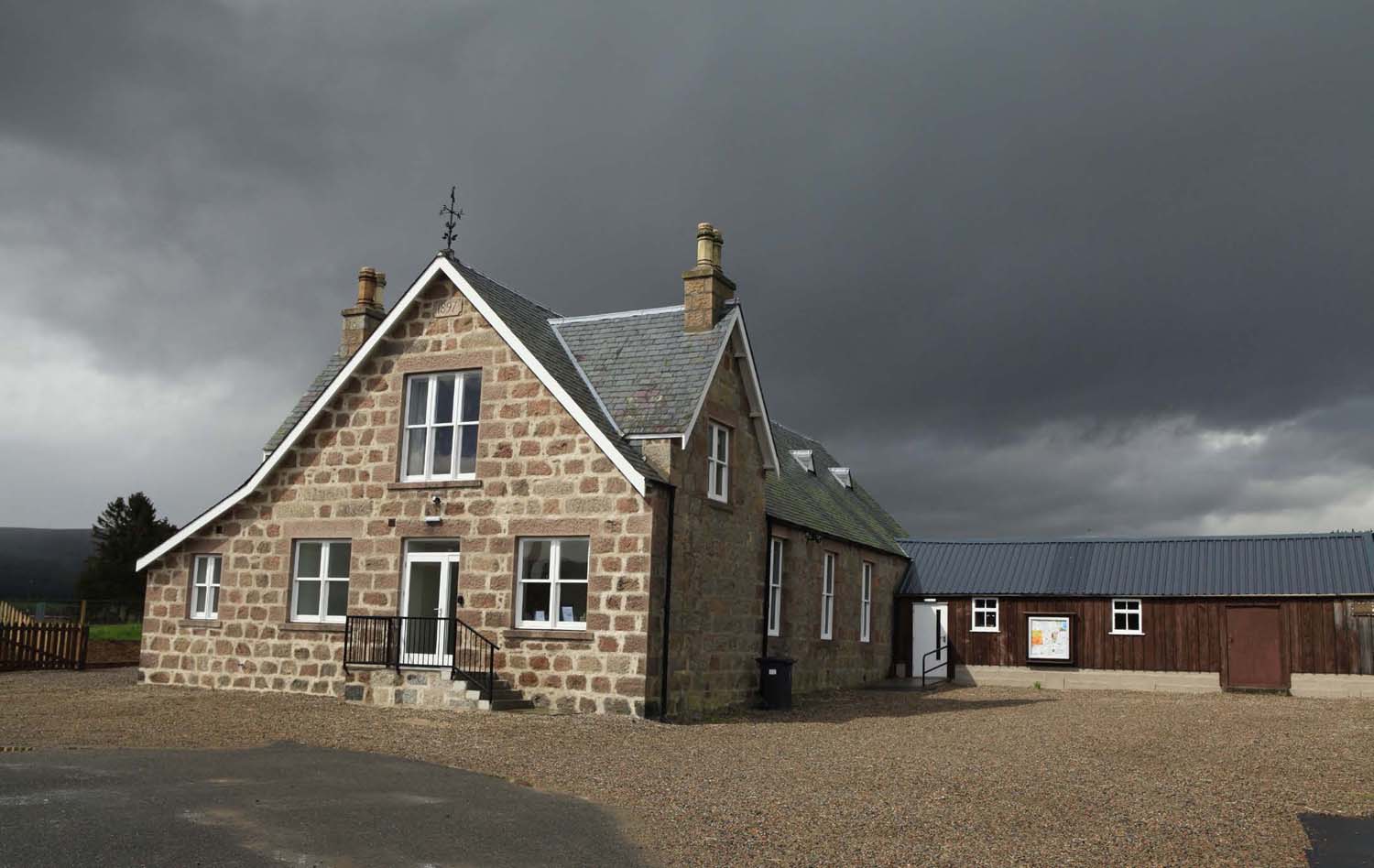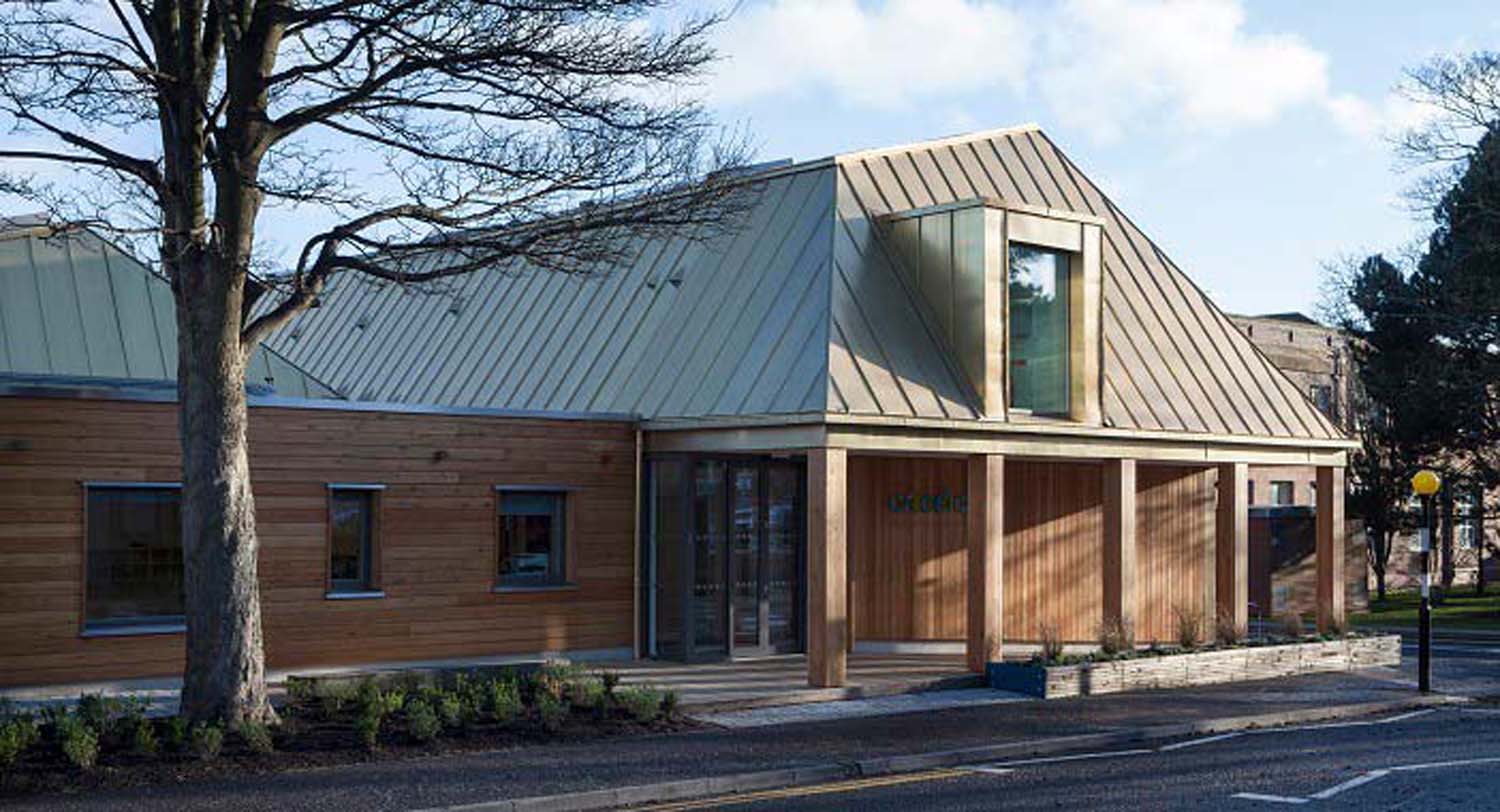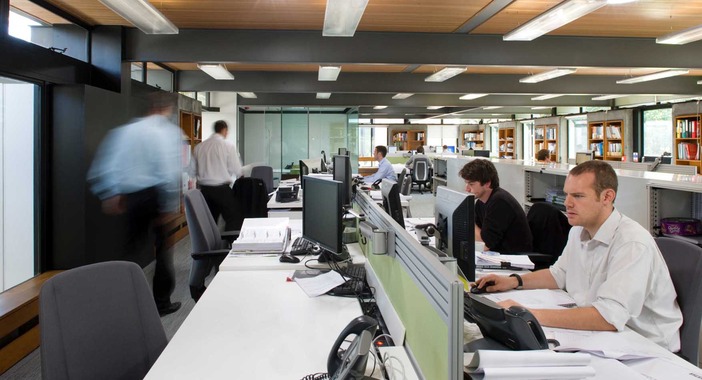Morgan Academy was created as a school to serve its city’s working-class community. Fast forward to 2001, the building was damaged by fire, leaving local authorities questioning the future of the build.
Read this case study to learn about the process to restore this A-listed building for future learners.
What this page covers:
A short history of Morgan Academy
Morgan Academy was founded by John Morgan in 1850 and is set in the heart of the city of Dundee. Morgan’s wish was to establish an educational institution that would serve the city’s working-class community.
A dispute arising over Morgan’s will meant that the building could not survive as a private venture, and it was acquired by the city in 1889 and established as a state school. The Academy—an imposing, baronial-style, A-listed building—became a familiar and much-loved city landmark.
In the intervening years, the academy went through several structural changes including the addition of a major extension in 1992.
Just 10 years later, in March 2001, the building was severely damaged by fire. The interior was destroyed, leaving an unstable external shell.
This forced the local authority to consider the future of Morgan Academy. A quicker and cheaper way to provide a replacement school would have been to build a new school on a green-field site.
But the council would still have been responsible for the restoration of the shell of the listed structure, without any obvious future use. Given the building’s cultural and architectural significance, it was agreed that it should be completely restored.
There are many sustainable advantages in the renovation of existing buildings:
- the reduction of demolition
- the re-use of resources both lessen environmental impact
- the reservation and new lease of life of an old and much-loved building
Approach to the build
At the time of the rebuilding of Morgan Academy, Dundee was positioning itself at the forefront of the development and delivery of renewable energy sources in Scotland.
Inspired by the fact that Dundee boasts one of the highest sunshine rates in Scotland, the ‘Dundee Sun City’ initiative was established as a partnership between:
- Dundee City Council
- Universities of Dundee and Abertay
- SCARF (the Save Cash and Reduce Fuel project based in Aberdeen)
- Scottish Enterprise Tayside
The aim of the initiative was to encourage education and urban regeneration through renewable energy sources.
The architect, quantity surveyors and engineering services for the project were all provided by Dundee City Council.
Emphasis was placed on establishing a partnering contract with the selected main contractor and principal sub-contractors so that they could work within a wide range of performance criteria.
In critical areas such as mechanical and electrical services, the partnering arrangements proved favourable, with responsibility for installation design detail resting with the sub-contractors.
The selection criteria emphasised that sub-contracting companies should, if possible, be local. Both so that building activity would benefit the local economy and to attempt to ensure effective post-contract services.
Investing and spending locally is a key component of a sustainable approach to regional development.
The listed status of the school allowed for a higher level of specification than would have been likely with other projects. The ‘Dundee Sun City’ initiative was also effective in securing additional funding and helped give the project momentum.
Design and building process
Simpson & Brown Architects drew up the conservation plans. They are a practice renowned for a sympathetic response to restoration and conservation within the remit of sustainable design.
The selection of materials for the conservation plan
The conservation plan recommended building materials such as slate, stone, timber, lime and clay-based products. These materials had relatively low embodied energy and provided further sustainable value from being able to source them locally.
Morgan Academy is a prime example of low impact in the manufacturing, extracting and transportation of materials—from conservation to carefully matching new materials to the existing buildings.
The courtyard
The original building had been planned around a courtyard. But over the year, various buildings had been erected on an ad hoc basis within the courtyard and a new north wing added in 1992.
The renovation process resulted in the additions being removed from the original courtyard to provide space for a new school assembly hall.
To avoid creating a potentially claustrophobic ‘enclosure’ of classrooms around this space, the project architect developed a plan that incorporated large expanses of glass in the hall roof, with extensive internal window-space overlooking the central space.
Situating the hall in the courtyard also allowed for a compact building form which reduced heat loss through the building fabric.
Tapping into renewable energy sources
The design team were keen to tap into renewable energy sources, partly to offset the need to use mechanical ventilation, heating and cooling in some parts of the building.
A shallow geothermal borehole installation was proposed, with a set of closed circuit alkathene pipes placed in 90-metre deep boreholes in two locations close to the main building.
A heat pump acts as a heat exchange between the geothermal pipe-run and water supply at suitable temperatures. In winter, the earth’s slightly higher temperature is extracted via the heat pump, while in summer excess heat extracted from classrooms is routed back into the ground.
The opportunity to hail Dundee as a pioneer of solar power-use encouraged the local authority to look at how photovoltaic cells (PVs) might power the geothermal installation.
Although concerned by the high costs of installation and long payback period, Dundee City Council made a successful application to the Energy Saving Trust Scotland and was awarded £115,000 to the costs of installation.
The photovoltaic array generates 34kw of energy at full power and will ensure that key areas of the school will be powered from renewables.
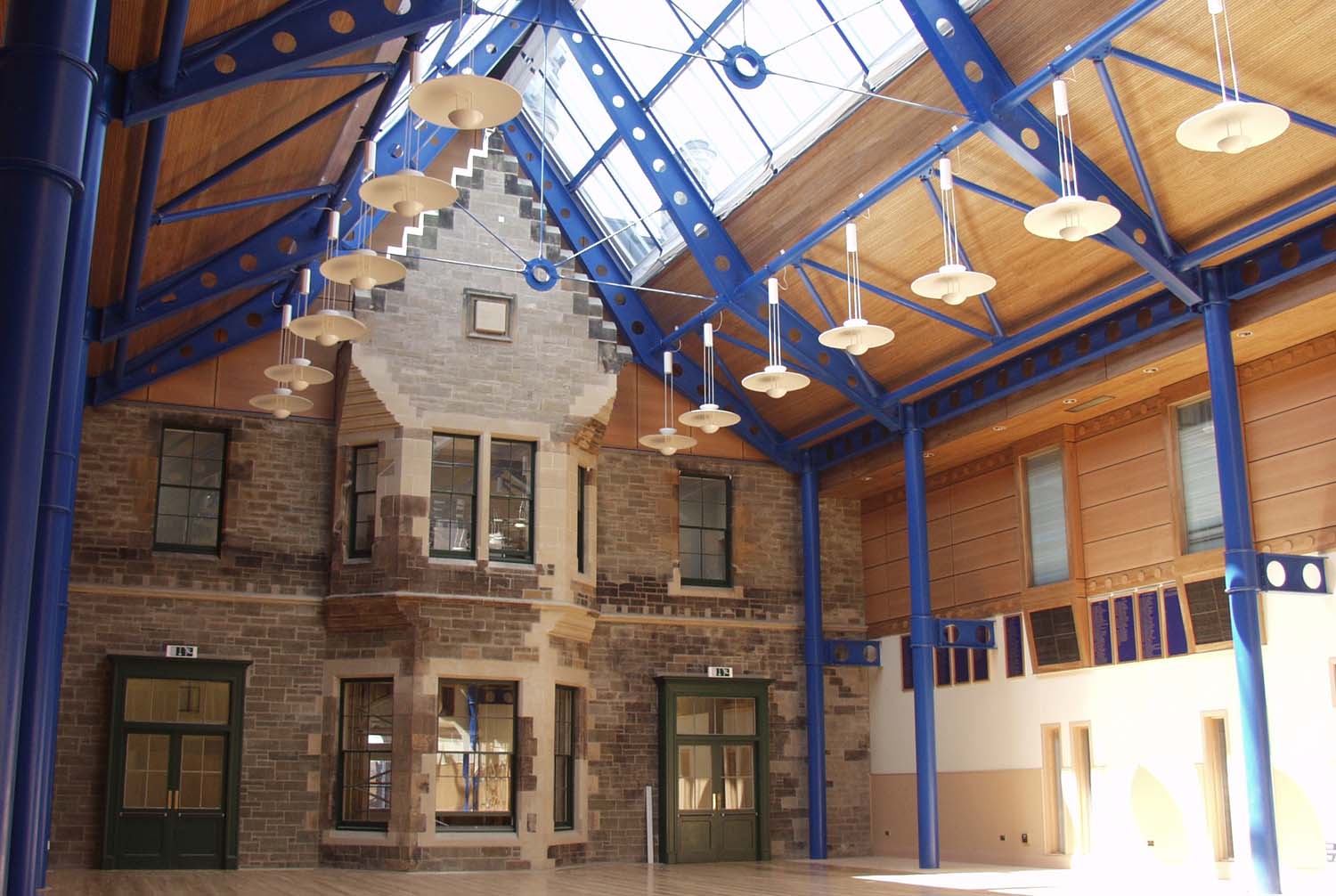
Atrium space and assembly hall
The renewables-led servicing strategy responded to various strategic design decisions such as natural ventilation and daylight made early in the project.
The decision to locate the assembly hall in the central courtyard had many advantages, namely retaining the external appearance and compact form of the school.
The atrium space and assembly hall are at the heart of the new school community. The predominantly glazed roof is designed to fill the area with light.
To counteract the potential drawbacks of such an expansive glass feature in terms of glare and overheating in hot weather, the glazing is solar-reflective and motorised blinds have been incorporated.
The space is mechanically ventilated, while some heat is recovered via air extraction. Although the classrooms surrounding the space feature internal windows, levels of daylight overspill have been reduced.
Classrooms around the atrium
Fire regulations prevented the opening of windows onto the courtyard from the classrooms. Because of the ventilation restrictions posed by these fire regulations, the classrooms required mechanical ventilation, heating and cooling systems.
These internalised rooms are provided with heated or cooled air as required from roof-top plant with individual room temperature control from a ‘Spilotair’ installation. This devolved system avoided the need for a large, centralised refrigeration plant. Staff are also able to set temperatures manually.
Classrooms around the external perimeter
Classrooms situated around the external perimeter of the building are serviced by a simple low-pressure hot water system for heating, while ventilation is achieved simply through opening windows. This allows a good degree of user control, while being simple, cheap and effective.
The heating and ventilation installation is characterised by a clear and logical configuration with a generous provision of space for maintenance and replacement.
The basement level features a ‘racetrack’ layout for the service-runs around the internal courtyard, with boilers providing heating and hot water. A further perimeter plant room is located around the rooftop areas, making provision for the heat pump, air-supply and extract ducting.
Upper corridors
Upper corridors of the school are contained centrally within the building and are lit via ‘sun pipes’—skylights with mirrored casings that maximise light transmission by piping external light into an enclosed pace.
This was done to introduce as much daylight into the school as possible, both as a means of reducing energy consumption and to maximise the beneficial qualities of daylight.
Key lessons learned
The lessons learned from this build is applicable for local authorities, organisations and schools that are undertaking a similar reconstruction of a listed building.
Benefits of re-use or conservation projects
Re-use and conservation are inherently sustainable, and compact-build forms reduce energy demand.
Building services strategies need finely attune to usage. If renewable energy installations are incorporated, this needs to be done as an integral part of a broader strategy.
Promoting sustainable development
Promoting sustainable development was a major aim under the ‘Dundee Sun City’ initiative. The restoration of Morgan Academy was intended to serve as a benchmark for the future—an educational institution that practises what it preaches. But how best to convey such a forward-thinking initiative to the school community and the wider population alike is still a challenge.
Setting up sustainability criteria from the start of the project
New systems of building procurement often move responsibility for the design and specification of works to contractor organisations. But in such special circumstances, it is crucial that sustainability criteria are specified and agreed upon at the start of the project.
Search for funding to accommodate high costs
Renewable technologies such as those employed at Morgan Academy have high capital costs, particularly photovoltaic installation. Special grant funding and the commitment of the local authority’s ‘Dundee Sun City’ initiative ensured that the development proceeded.
Carrying out future assessments for sustainable technologies
It was also important that the local authority was seen to be supporting such technologies, and to influence the attitudes of businesses and local community in favour of sustainable design. To reinforce this, they agreed that a thorough assessment of the long-term benefits of the initiative should be carried out.
Sustainable material and system considerations for other projects
While sustainable design measures adopted in the renovation of Morgan Academy are praiseworthy, other projects would have to consider the unique circumstances of the fire damage and the cultural qualities of the existing building.
The use of high-cost materials and components on new-build projects could prove prohibitive. In such cases, other sustainability criteria can be applied, for example, using low toxicity building materials or the increased use of passive solar systems.
Heat pump and PV technologies have high capital outlay, but it can be possible for local authorities to make an economic argument that specifying such technologies reduces fixed and recurring costs in their building stock.
Introducing an element of renewable energy sources into a large property portfolio can also reduce the impact of the future instability in energy cost, which is likely to happen as the UK imports more fossil fuel such as gas and coal.
In the long term, renewable energy sources may lead to a much-desired certainty in cost efficiency and life-cycle analysis.
Further information
To view the photographic record of Morgan Academy by the Royal Commission on the Ancient and Historical Monuments of Scotland (RCAHMS), click here.
Explore the possibilities of a sustainable design approach for your project
We have a variety of case studies and resources for different types of buildings with a sustainable design approach. From schools to offices and village halls to housing estates, these case studies can help you explore the different ways to incorporate sustainable design ideas into your project.

